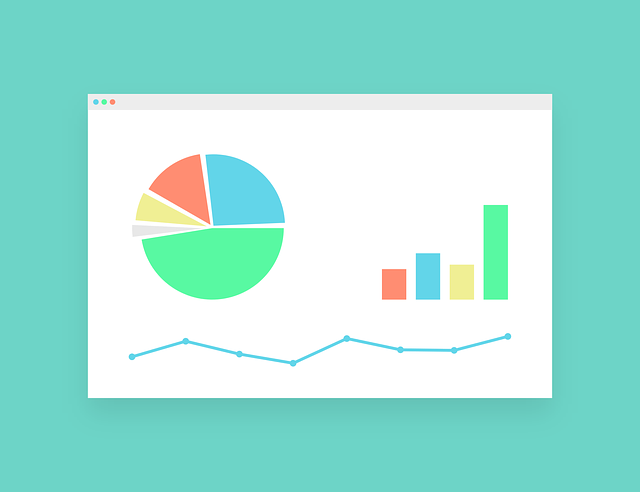Business is all about numbers and money. Numbers give you insights about your current positions enabling you to plan growth. It helps you to pinpoint what is right for your business and what’s harming it. An app is an essential and powerful tool for your business. They can help your business to reach more customers, engage them, and increase revenue.
Just like other business metrics, app metrics are essential in determining the success of the app. The parameters usually include performance, acquisition, engagement metrics, etc. These metrics allow you to analyze the app and improve the app’s performance for better user experience and, ultimately, more revenue.
But with many metrics, you might be wondering which ones are the most crucial. We’ll be discussing the top five mobile apps KPIs and engagement metrics you can use.
Table of Contents
What are the Key Mobile App Performance Indicators?
1. Retention Rate
App experts believe that retention rates are among the most significant KPIs for mobile apps. It measures the percentage of users who come back after their first download and use the app. This can be a measurement of those returning within 7, 30, or 60 days. You do need to have good retention because it improves conversions.
This metric is important because it helps you to determine how useful your app is to your users. If several users return, it means that the app offers valuable information or service. By contrast, a poor retention rate calls for more refinement of the app.
 You need to do more than focusing on attracting new users. High download numbers are nice, but it doesn’t always translate to success. User retention helps you understand the user’s actions and concentrate on what’s best for your customers.
You need to do more than focusing on attracting new users. High download numbers are nice, but it doesn’t always translate to success. User retention helps you understand the user’s actions and concentrate on what’s best for your customers.
Once you know the retention rate, you should go deeper to understand other factors using mobile app analytics tools.
Another important mobile app metric is stickiness. A sticky app is one that keeps users engaged for longer periods. And if the customers are well-engaged, then it often translates to high retention.
Those two go hand in hand, as it helps you evaluate returning customers’ actions and make changes to keep them longer.
The user behavior per session is another measure that goes along with the retention rate. It analyses the actions which are valuable to users, like what they are doing over the sessions. The trends around these metrics help you to match your product with their needs.
Additionally, you may want to understand the churn rate or the number of users who fell off in retention. That helps you to identify the parts in your funnel that are not converting.
Given the high cost of attracting new customers, it is important to retain them. You’ll be amazed by the impact small improvements can have on your customers. The user retention estimation formula primarily relies on your analytics objectives.
2. Active Users
Why should you measure active users? The number of active users is important from a business standpoint since more users mean more revenue. Besides, a large audience is perfect for app marketing and advertising. And the app needs a lot of active users to succeed.

How you identify active users depends on your product or company. It can be as easy as calculating those who simply open the app or evaluate any user’s behavior. Those that complete the desired activities qualify as active users to be counted. These are usually classified according to periods such as:
- Daily Active Users (DAU): reflects the number of customers on a given day who interact with the app. This measure is perfect for businesses that require users to use it daily, such as calendars, emails, and games.
- Weekly Active Users (WAU): measures the number of customers who use the app within seven days. Businesses with a weekly frequency like social communities and analytics tools can benefit from this metric.
- Monthly Active Users (MAU): represents the number of customers engaging with the app within 30 days. It’s often used for B2BMines applications that allow users to interact with the app monthly, such as accounting and bookkeeping companies.
How active users are measured depends on how you define the activity. Typically you define an active user, determine the periods to focus on, collect data, and determine the users who qualify to be called active users for that time frame.
3. Session Length
Businesses need to understand whether the app fulfills its mission by keeping the users engaged for long. Although this is not the only metric for measuring engagements, it’s one of the most important.
When a user starts your app, it counts as a session. Depending on your business, calculating the duration of the session helps you to know whether the users are performing the desired action, such as communicating with more people, purchasing, and more.
Session length for most applications is the time that the user spends on the app. But in certain applications like streaming apps, the amount of time the app spends running on the background counts. However, most value is placed on the time the users spend between activities when using the app.
Other relevant metrics when analyzing session duration include:
- Session frequency: The number of times in a day that the user is using the app. This allows businesses to identify super users and use their behaviors to enhance the experience for less active users.
- Session interval: Represents the time it takes a user to come back. It’s a good way to determine what brings users to the app and measuring vindictiveness.
- Time in the app: This indicates the real-time that users spend on the app. It is observable daily, weekly, or monthly.
This metric is a valuable tool for understanding user behavior. The average session length must be based on the nature of the mobile app and its intent.
4. Cost Per Acquisition (CPA)
Every business needs a wide customer base to succeed. For that to happen, you need to invest time, effort, and money to increase user acquisition. But how much should you invest in that process? That’s why user acquisition comes in. It enables you to measure productivity and profitability.
Attracting new users is costly. You have to identify and reach the target group using various means, which often cost a lot. How you pursue the whole process to finally having the customer install and use your app amounts to CPA.

Determining the cost of user acquisition will allow you to decide whether the method is worth it. To meet this number, you must consider all the tools that come into play, from targeting potential customers to making them into active consumers. This includes paying advertisement fees, wages for staff, publicity campaigns, print and publication costs, digital marketing costs, software licenses, etc.
The accuracy of your CPA depends on how accurate you are in estimating the costs involved. Once you have total marketing cost, divide it by the number of new users acquired within a given period.
Nevertheless, having a CPA should be the end. You can go ahead to find out more from other metrics like:
- Cost Per Install reflects how much to spend on triggering a user to install your app.
- Customer Lifetime Value tells you how profitably the acquired consumer is based on his lifetime use of the app.
- The average revenue per user represents the average revenue generated by a consumer using it during a given time frame.
5. User Experience
Ultimately, all that matters is user experience. This metric helps you determine if the time consumers spend on your app is of value to them. Numbers alone can deceive. Just because you have a lot of users doesn’t mean the users enjoy the app.

You can tell if the app meets its user expectations by determining how likely users recommend the app to other users. Net Promoter Score (NPS) responses and surveys are the best ways to determine your customer’s views of the app. Other app metrics, like the number of sessions, time spent in the app, and the number of shares, are also crucial for measuring customer satisfaction.
Besides, you can also use app ratings and reviews on the app store to assess user experience. You can use the information gathered to fix user interface (UI) glitches, bugs, and crashes to enhance user satisfaction.
Conclusion
Your app is a worthwhile investment. But it’s not yet time to relax even after launching it. Now you need to start evaluating app performance, customer satisfaction, user engagement, and acquisition. Both of these help you decide whether the app meets your target and if it’s profitable.
We’ve looked at the most critical metrics you need to scale and evaluate your app’s performance. While the data collection process begins after deployments, you need to prepare ahead. Ensure that you take these measures into account to build and manage a successful mobile app from a business perspective.

